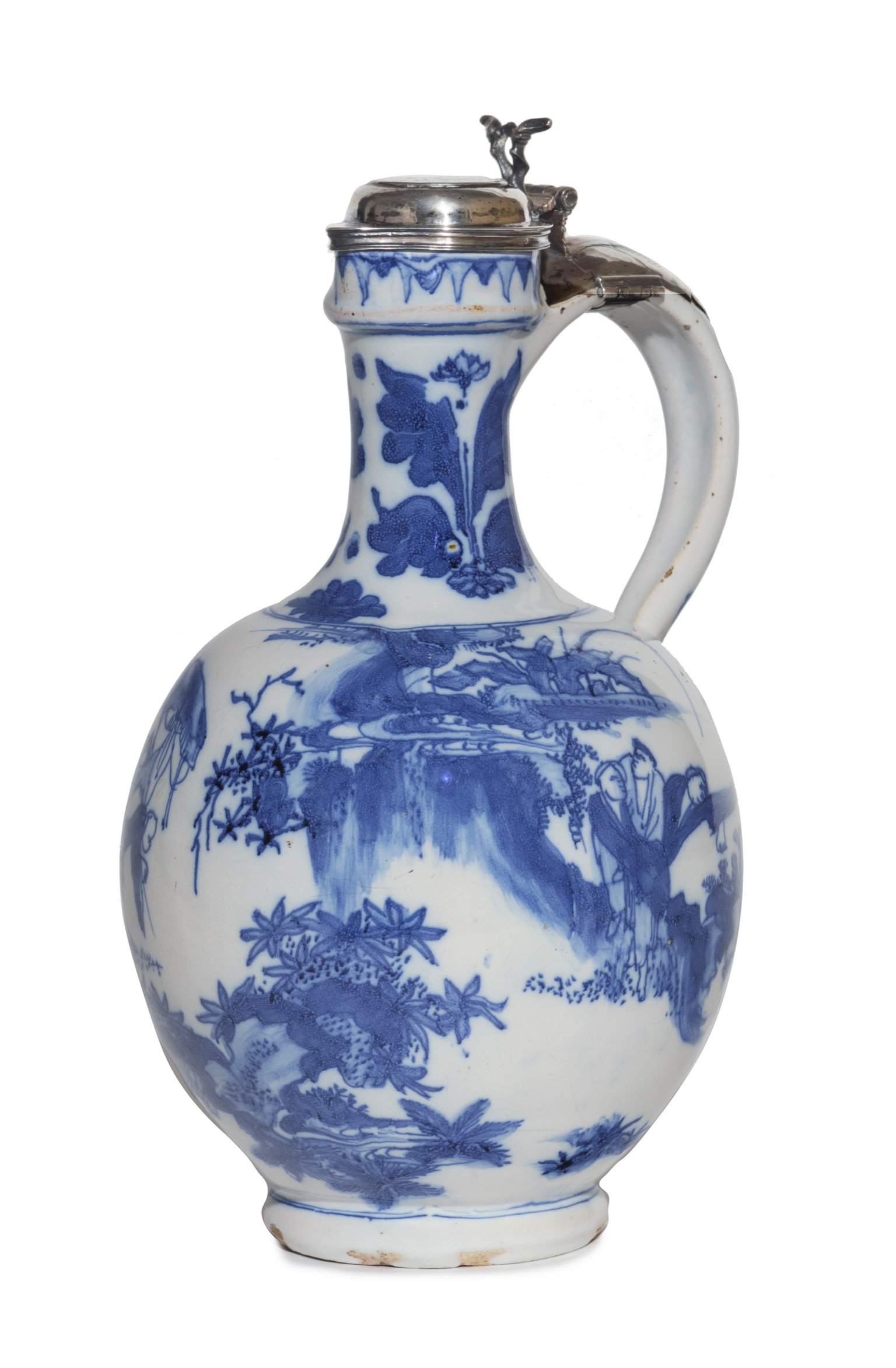![]()
Images on this website are licensed under a
Creative Commons Attribution-NoDerivs 3.0 Unported License.
OBJECT
D2402. Blue and White Silver Mounted Chinoiserie Jug
Delft, circa 1670
Standing on a foot, painted in blue on the ovoid body with a continuous scene depicting a group of three Chinese figures conversing in an exotic landscape with shrubbery, palm trees and rocks on one side and a group of four Chinese figures holding one parasol on the other side, the neck with foliate ornaments in transitional style, and the loop handle with a band of scrolls; the silver cover, which is contemporary with the jug, with a knot-form thumb-piece is affixed to the handle with a hinged silver foliate shape, marked with a later date Dutch tax stamp (‘J’), the top of the beak-shaped lid with engraved alliance weapons: the Calmes family on the left and the Beckingerh family on the right; for Ytje Calmes (1642-1688) and Gerrit Beckeringh (1647-1684) to commemorate their marriage in Zuid-Horn, in Groningen Province, The Netherlands on January 13, 1678.
DIMENSIONS
Height: 26 cm. (10.2 in.)
PROVENANCE
Abraham van der Meer (1927-2008) Collection, Amsterdam
NOTE
The Dutch East India Company (VOC) imported tens of millions of pieces of porcelain during the two centuries of its existence (1602-1799) and flooded the country with Chinese and Japanese tablewares. The Chinese porcelain introduced exotic imagery, such as depictions of dragons, temples and emperors. One can only imagine how enthralled the Dutch consumers must have been with the ceramics, textiles, furniture, and paintings that had traveled such distances to reach their homes. Western fashion also changed in response to the plethora of new goods. The parasol, or umbrella, was one such item that was previously unknown in the West and quickly became an indispensable accessory. Parasols and umbrellas reached continental Europe through the opening of trade routes in Asia. They were also known in the West through their depiction on Chinese porcelain, which inspired chinoiserie style Delftware. This European style of decoration in which Chinese figures, landscapes, architecture and attributes are imitated, or evoked, originated in the seventeenth century and quickly became a dominant fashion throughout Europe, enduring the first half of the eighteenth century.
The Delftware painter chose specific elements that he deemed most characteristic for exotic Asia and combined it with other decoration as he wished. To seventeenth-century eyes, parasols and umbrellas must have been admired as exotic and luxurious objects because they are found on many Delftware decorations.









